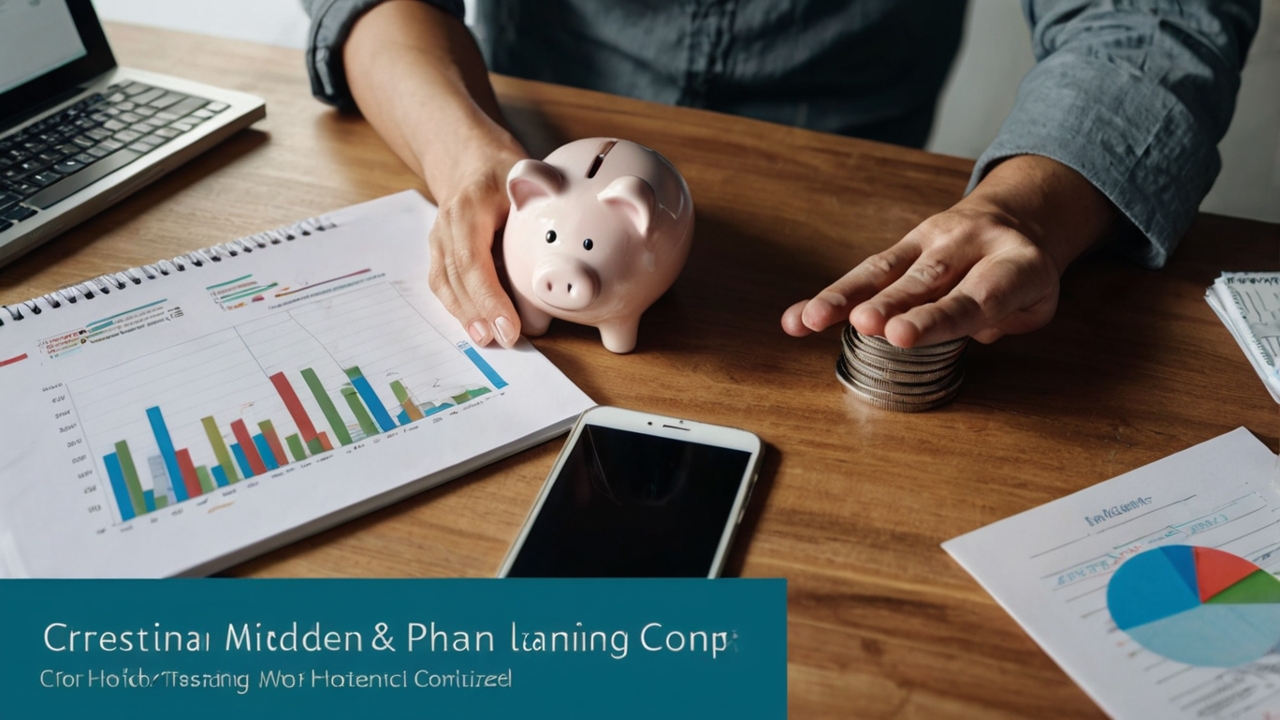Introduction: Why Saving on Food and Shopping Expenses Matters
In the face of ever-changing economic conditions, saving on food and shopping expenses represents both a challenge and an opportunity. It's no longer just about reducing spending, but rather an art that requires smart planning, conscious consumption habits, and a deep understanding of our true needs. Saving in these areas doesn't mean sacrificing quality of life, but rather managing it more effectively, and directing financial resources towards achieving long-term goals such as investing, buying a home, or early retirement.
Chapter 1: Analyzing Current Spending: The Starting Point for Saving
Before embarking on any savings plan, it's essential to understand exactly where your money is going. This basic step helps you identify areas where you can make significant changes. Here's how to do it:
- Track Expenses: Use a spending tracking app or a simple spreadsheet to record every penny you spend on food and shopping.
- Categorize Expenses: Divide your expenses into major categories such as groceries, eating out, clothing, entertainment, etc.
- Analyze Data: After collecting data for a month or two, analyze it to identify areas where you are overspending.
- Set Goals: Based on the analysis, set realistic goals for reducing spending in each category. For example, you might aim to reduce spending on eating out by 20%.
Practical Example: Let's say you spend $500 a month on eating out. Your goal might be to reduce this to $400, saving you $100 per month.
Chapter 2: Meal Planning: Your Secret Weapon Against Waste
Meal planning is a powerful strategy for reducing food waste, saving money, and eating healthier meals. Here's how to implement it effectively:
- Weekly Planning: Set aside time each week to plan your meals. Think about what you want to eat, and prepare a list of the necessary ingredients.
- Utilize Inventory: Before going shopping, check what you already have in the fridge and pantry. Use existing ingredients to reduce the need to buy more.
- Prepare a Shopping List: Based on the meal plan, prepare a detailed shopping list and stick to it. Avoid impulse buying.
- Cook in Bulk: Prepare meals large enough to last for several days. This saves you time and money in the long run.
- Freeze Surplus: If you have excess food, freeze it for later use.
Statistic: Studies show that meal planning can save up to 25% of your food budget.
Chapter 3: Smart Shopping: How to Get the Best Deals
Smart shopping doesn't necessarily mean buying the cheapest products, but rather getting the best value for your money. Here are some tips to achieve this:
- Compare Prices: Before buying, compare prices between different stores. Use online price comparison apps.
- Take Advantage of Offers and Discounts: Look for offers and discounts, and use coupons. Subscribe to store newsletters to get alerts about special offers.
- Buy in Bulk: If you have enough storage space, consider buying in bulk for products you use regularly.
- Seasonal Shopping: Buy fruits and vegetables in season when they are cheaper and fresher.
- Avoid Emotional Buying: Before buying, ask yourself if you really need this product or if you are influenced by advertising or a momentary desire.
Practical Tip: Use cashback apps to get a portion of your money back when you shop.
Chapter 4: Reducing Eating Out: Less Pleasure, More Savings
Eating out can be very expensive. Here are some ways to reduce these expenses:
- Cooking at Home: Instead of eating at restaurants, try cooking at home as much as possible.
- Prepare Lunches: Bring lunch with you to work or school instead of buying it.
- Enjoy Healthy Snacks: Instead of buying unhealthy snacks, prepare healthy snacks at home.
- Choose Restaurants Wisely: If you want to eat out, choose restaurants that offer reasonable prices.
- Take Advantage of Lunch Specials: Many restaurants offer lunch specials at discounted prices.
Example: If you eat lunch out 5 days a week at a cost of $10 per meal, you spend $50 per week. If you prepare lunch at home instead, you can save at least $30 per week.
Chapter 5: Utilizing Leftovers: Don't Throw Away, Reuse
Leftovers are often discarded, but they can be turned into delicious and nutritious meals. Here are some ideas:
- Reuse Vegetables: Leftover vegetables can be used in soups, stews, or pies.
- Turn Meats into New Meals: Leftover meats can be turned into sandwiches, salads, or pasta dishes.
- Reuse Rice: Leftover rice can be turned into fried rice, salads, or desserts.
- Freeze Leftovers: If you don't plan to eat the leftovers the next day, freeze them for later use.
Tip: Be creative in using leftovers. Search for new recipes online and try different ways to reuse ingredients.
Chapter 6: Growing Your Own Food: A Fun and Saving Experience
Growing some of your own food can be a fun and saving experience. Even if you don't have much space, you can grow herbs, leafy greens, and tomatoes in pots or vertical gardens.
- Growing Herbs: Herbs like parsley, cilantro, and mint are easy to grow in pots.
- Growing Leafy Greens: Leafy greens like lettuce, spinach, and arugula grow quickly in small gardens.
- Growing Tomatoes: Tomatoes can be grown in pots or vertical gardens.
Statistic: Growing a small garden can save you hundreds of dollars a year on grocery purchases.
Chapter 7: Sustainable Shopping: Environmentally and Budget-Friendly Options
Sustainable shopping doesn't just mean buying organic products, it also means making environmentally and budget-friendly choices. Here are some tips:
- Buy Organic Products: Look for organic products that are reasonably priced.
- Buy Local Products: Supporting local farmers and buying local products can be cheaper and fresher.
- Reduce Waste: Use reusable bags and avoid products with excessive packaging.
- Recycle: Recycle glass, paper, and plastic containers.
Tip: Look for local farmers' markets in your area. They often offer fresh products at lower prices than large stores.
Chapter 8: Comparing Brands: Don't Just Pay for the Name
Often, you pay more for well-known brands without getting better quality. Compare different brands and try cheaper alternative products.
- Read Labels: Compare the nutritional ingredients and nutritional values of different products.
- Try Alternative Products: Try cheaper alternative products and don't just stick to well-known brands.
- Read Reviews: Look for product reviews online before buying.
Example: Often, store-branded products are of the same quality as well-known branded products, but they are much cheaper.
Chapter 9: Saving on Energy and Water: A Multiplier Effect on Your Budget
Saving on energy and water not only benefits the environment but also saves money. Here are some tips:
- Use Energy-Saving Bulbs: Replace traditional bulbs with energy-saving bulbs.
- Turn Off Lights: Turn off the lights when leaving the room.
- Repair Leaks: Repair any leaks in faucets or toilets.
- Shower for a Shorter Time: Reduce the amount of time you shower.
- Use Energy and Water-Efficient Appliances: When buying new appliances, choose energy and water-efficient appliances.
Statistic: Changing your habits in using energy and water can save you hundreds of dollars a year.
Chapter 10: Turning Savings into Investment: A Better Financial Future
Saving is the first step towards achieving financial independence. After saving money, you can invest it to achieve greater returns. Here are some options:
- High-Yield Savings Accounts: Put your money in savings accounts that offer higher interest rates.
- Stocks and Bonds: Invest in stocks and bonds to achieve higher long-term returns.
- Real Estate: Invest in real estate for rental income or capital gains.
- Investing in Yourself: Invest in education and training to develop your skills and increase your income.
Tip: Consult a financial advisor for advice on how to invest your money properly.
Conclusion: Saving on food and shopping expenses is not just a financial goal, but a lifestyle. By planning ahead, shopping smartly, and making sustainable choices, you can achieve your financial goals and improve your quality of life.




